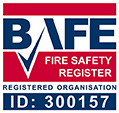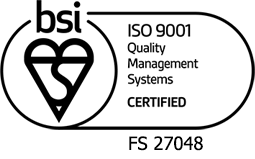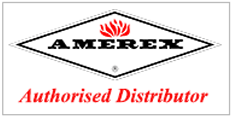Our standard advice is to read the instructions and make yourself familiar with HOW TO USE IT. Don't leave it until you have a fire! It should be part of your procedures to familiarise yourself every 6-12 months.
You can find details on the following subject areas by clicking on the links below:
- Dry Powder Fire Extinguisher – How To Use It
- Dry Powder Fire Extinguishers – How They Work
- Foam Fire Extinguisher – How To Use It
- Foam Fire Extinguishers – How They Work
- Water Fire Extinguisher – How To Use It
- How Do Water Fire Extinguishers Work?
- Carbon Dioxide Extinguisher – How To Use It
- How Do Carbon Dioxide Extinguishers Work?
Dry Powder Fire Extinguisher – How To Use It
Note: Although dry powder fire extinguishers are suitable for electrical fires you should always isolate the electrical supply before tackling the fire.
When tackling a fire with a dry powder extinguisher aim the jet at the base of the flames and use a steady side to side sweeping motion to dispel the flames.

If you are dealing with a spilled liquid that has ignited, you should aim at the side closest to you first and then use a fast sweeping motion to working your way to the farthest point of the fire.
 Dry Powder Fire Extinguishers – How They Work
Dry Powder Fire Extinguishers – How They Work
Dry powder fire extinguishers, such as our 1kg, 2kg, 6kg and 9kg, are filled with an inert solid which is the dry powder and then pressurised with a gas such as nitrogen.
You will find that the most common powder used is monoammonium phosphate. The benefit of using this powder to extinguish fires is that the powder will produce what are known as 'free radicals' as it decomposes and it is these free radicals that interrupt the combustion cycle whilst the powder forms a skin over the material starving it of oxygen.
Another popular dry powder used is sodium bicarbonate . Sodium bicarbonate works by producing carbon dioxide gas as it decomposes and it is this gas which starves the fire of oxygen whilst the skin, which is formed by the powder, starves the oxygen supply.
Your fire extinguishers should be sited in a conspicuous position on a wall and ours are supplied with wall mounting brackets or you could use a stand. They should always have a fire extinguisher sign above to identify the fire extinguisher's type and application.
We also recommend that your fire extinguishers be pressure tested after a number of years in use, to ensure that the cylinder is still safe. Consult your fire extinguisher manual, the label, or the manufacturer to find out when yours requires testing.
Foam Fire Extinguisher – How To Use It
Although many foam fire extinguishers are suitable for electrical fires, you should always isolate the electrical supply before tackling the fire.

Foam fire extinguishers operate in much the same way that you operate a water fire extinguisher in that you pull the pin and squeeze the trigger to release the contents and aim at the base of the Class A fire such as wood, paper, etc.
However, if you are using a foam fire extinguisher on a Class B fire, a liquid fire, you will not want to aim the foam directly at the fire as you may cause it to disperse and spread even further. It is better if the foam is allowed to drop onto a liquid fire by aiming the foam at a surface, to allow it to fall onto the burning liquid.
For example, if you had a liquid burning in a container, you could aim at the inside of the container allowing the foam to fall onto the burning liquid, building up sufficiently to allow it to spread across the liquid, extinguishing the flames.
 Foam Fire Extinguishers – How They Work
Foam Fire Extinguishers – How They Work
Foam fire extinguishers, such as our 6 litre and 9 litre fire extinguishers, are filled with Aqueous Film Forming Foam which pound for pound are far more effective than the same weight water fire extinguisher. In fact the foam can expand up 20 times its size smothering a fire very quickly.
The foam fire extinguisher extinguishes the fire by smothering the fire and therefore reducing the oxygen supply until it cannot continue burning. Additionally, the fire is cooled as the water in the foam begins to evaporate helping prevent combustion.
Your fire extinguishers should be sited in a conspicuous position on a wall and ours are supplied with wall mounting brackets or you could use a fire extinguisher stand. They should always have a fire extinguisher sign above to identify the fire extinguisher's type and application.
Water Fire Extinguisher – How To Use It
When using water fire extinguishers, aim the water spray at the burning material and continue to spray across the area of the fire. If the fire is advancing vertically aim the water jet at its base then work upwards.

 How Do Water Fire Extinguishers Work?
How Do Water Fire Extinguishers Work?
The water fire extinguisher works by cooling the burning material.
After the initial fire is extinguished check for any hot spots that could possibly reignite.
Your fire extinguishers should be sited in a conspicuous position on a wall - ours are supplied with wall mounting brackets, or you could use a stand. They should always have a fire extinguisher sign above to identify the fire extinguisher's type and application.
Carbon Dioxide Extinguisher – How To Use It
Although carbon dioxide fire extinguishers (CO2) are suitable for electrical fires you should always try to isolate the electrical supply before tackling the fire.
Also, be aware that the CO2 is released under high pressure, so there is the possibility of, when tackling a fire that involves burning oil, splattering the oil and spreading the fire.

CO2 fire extinguishers are supplied with a horn, which you use to direct the carbon dioxide at the base of the fire, then sweep slowly back and forth.
Be careful to check that the fire is completely extinguished, as there is no cooling agent and, therefore, there is a risk the fire could reignite.
 How Do Carbon Dioxide Extinguishers Work?
How Do Carbon Dioxide Extinguishers Work?
Carbon Dioxide extinguishers, such as our 2kg and 5kg options, are filled with highly pressurised liquidised carbon dioxide which turns to CO2 gas upon release and smothers the fire by depriving it of oxygen. It is expelled at such pressure that it is not unusual to see ice droplets.
If you use a CO2 fire extinguisher in a confined room or space, ensure you ventilate the area as soon as possible.
Your fire extinguishers should be sited in a conspicuous position on a wall, and ours are supplied with wall mounting brackets for this purpose, or you could use a stand. They should always have a fire extinguisher sign above to identify the fire extinguishers type and application.
Maintenance of your extinguishers is important, and we advise you should inspect your fire extinguishers at least once a month and have them serviced once a year or as recommended by the manufacturer.
We also recommend that your fire extinguishers be pressure tested after a number of years in use, so as to ensure that the cylinder is still safe. Consult your extinguisher manual, the label, or the manufacturer to find out when yours requires testing.
Maintenance and servicing of all of the above types of fire extinguisher is important and we advise that you should inspect your fire extinguishers at least once a month and have them serviced once a year or as recommended by the manufacturer.
View our comprehensive range of Fire Protection Products & Services including Fire Extinguishers, Designer Fire Extinguishers, Fire Extinguisher Servicing and Maintenance, Fire Risk Assessments and Reviews, and much more.
Quality Matters because People Matter
Disclaimer: INFORMATION PROVIDED ON THIS WEBSITE IS NOT INTENDED TO BE TREATED AS PROFESSIONAL ADVICE AND SHOULD NOT UNDER ANY CIRCUMSTANCES BE USED AS A SUBSTITUTE FOR PROFESSIONAL ADVICE. ALWAYS CONSULT A FIRE PROFESSIONAL FOR ADVICE ON YOUR PARTICULAR CIRCUMSTANCES AND REQUIREMENTS.





 Blackwood Fire began trading in 1983. We have an absolute belief in quality - it is the cornerstone of our company's culture. Our primary aim is to help you protect the lives and livelihoods of people and your organisation or business by ensuring that we only provide quality products that fully meet industry standards - also, by providing continuous training to our staff via recognised trade bodies, associations and the British Standards Institute (BSI). We strongly believe that promoting quality practices and dealing with everyone in a fair and honest manner adds value to organisations and businesses. Read more on our
Blackwood Fire began trading in 1983. We have an absolute belief in quality - it is the cornerstone of our company's culture. Our primary aim is to help you protect the lives and livelihoods of people and your organisation or business by ensuring that we only provide quality products that fully meet industry standards - also, by providing continuous training to our staff via recognised trade bodies, associations and the British Standards Institute (BSI). We strongly believe that promoting quality practices and dealing with everyone in a fair and honest manner adds value to organisations and businesses. Read more on our 